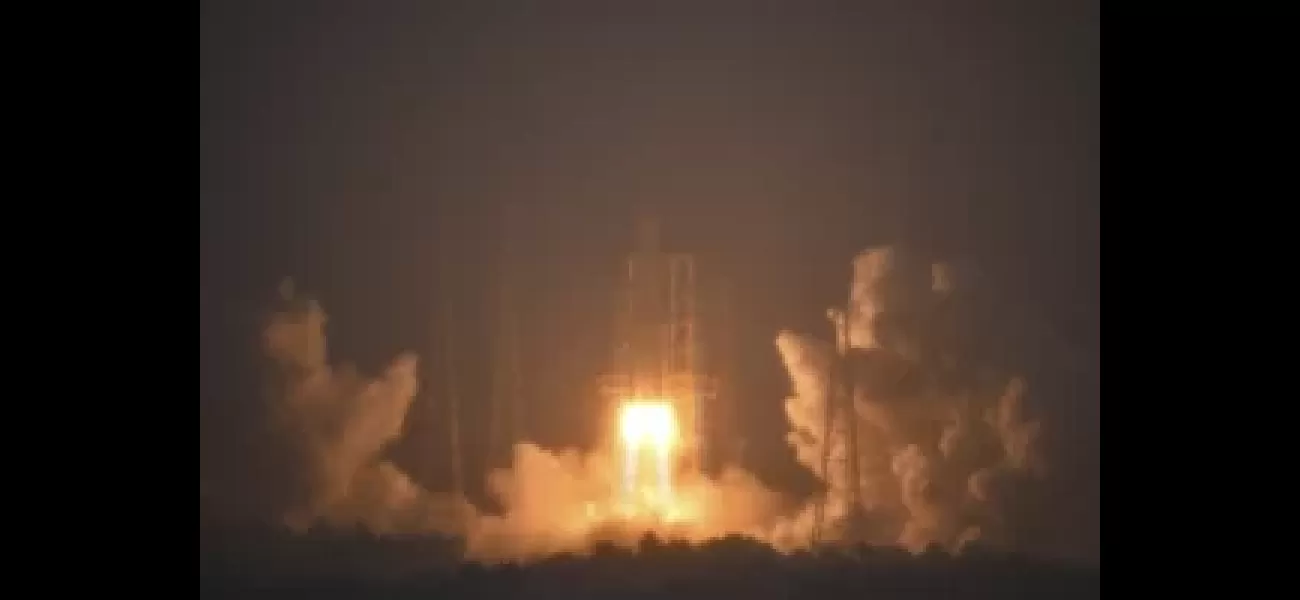China sends spacecraft to far side of moon to retrieve samples in first mission of its kind.
China launched a mission to collect samples from the far side of the moon and bring them to Earth for scientific research, marking the first time this has been done.
May 3rd 2024.

On a historic Friday in Beijing, China marked a significant milestone in lunar exploration by launching the Chang'e 6 mission. This mission, tasked with collecting and bringing back samples from the far side of the moon, is the first of its kind in human history, as announced by the China National Space Administration.
The Long March-5 Y8 rocket, carrying the lunar probe, took off from the Wenchang Space Launch Site on the coast of Hainan, China's southern island province. Consisting of four components - an orbiter, a lander, an ascender, and a re-entry module - the Chang'e 6 mission is equipped to complete its mission successfully, according to a report by the state-run China Daily.
Once on the moon, the ascender will collect dust and rocks and transport them to the lunar orbiter for transfer to the re-entry module. This module will then bring the samples back to Earth, providing scientists with invaluable materials for further studies.
The China National Space Administration has expressed confidence in the mission's ability to achieve breakthroughs in crucial technologies such as automatic sample collection, take-off, and ascent from the far side of the moon. Additionally, the probe will also conduct scientific exploration of the landing zone, providing new insights into the lunar environment.
The Chang'e 6 mission is not just a Chinese effort, as it carries scientific instruments from France, Italy, and the European Space Agency/Sweden on its lander, and a payload from Pakistan on its orbiter. This collaboration further cements China's status as a major space power.
In the past, China has successfully launched unmanned missions to the moon, including a rover landing. They have also sent a rover to explore Mars. Looking towards the future, China has announced plans for a manned lunar landing by 2030.
Last year, India achieved a major feat by becoming the first country to land near the little-explored lunar south pole region through its Chandrayaan-3 mission, which carried the Pragyaan rover. As countries around the world make strides in lunar exploration, it is clear that humanity has a shared interest in unlocking the mysteries of our closest celestial neighbor.
The Long March-5 Y8 rocket, carrying the lunar probe, took off from the Wenchang Space Launch Site on the coast of Hainan, China's southern island province. Consisting of four components - an orbiter, a lander, an ascender, and a re-entry module - the Chang'e 6 mission is equipped to complete its mission successfully, according to a report by the state-run China Daily.
Once on the moon, the ascender will collect dust and rocks and transport them to the lunar orbiter for transfer to the re-entry module. This module will then bring the samples back to Earth, providing scientists with invaluable materials for further studies.
The China National Space Administration has expressed confidence in the mission's ability to achieve breakthroughs in crucial technologies such as automatic sample collection, take-off, and ascent from the far side of the moon. Additionally, the probe will also conduct scientific exploration of the landing zone, providing new insights into the lunar environment.
The Chang'e 6 mission is not just a Chinese effort, as it carries scientific instruments from France, Italy, and the European Space Agency/Sweden on its lander, and a payload from Pakistan on its orbiter. This collaboration further cements China's status as a major space power.
In the past, China has successfully launched unmanned missions to the moon, including a rover landing. They have also sent a rover to explore Mars. Looking towards the future, China has announced plans for a manned lunar landing by 2030.
Last year, India achieved a major feat by becoming the first country to land near the little-explored lunar south pole region through its Chandrayaan-3 mission, which carried the Pragyaan rover. As countries around the world make strides in lunar exploration, it is clear that humanity has a shared interest in unlocking the mysteries of our closest celestial neighbor.
[This article has been trending online recently and has been generated with AI. Your feed is customized.]
[Generative AI is experimental.]
0
0
Submit Comment





